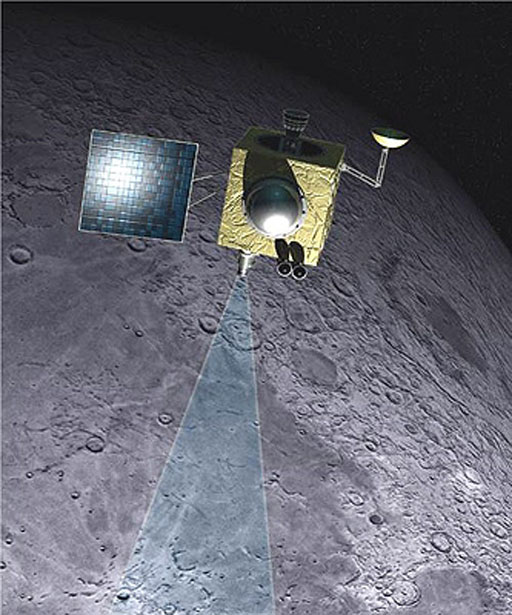Chandrayaan-1 - PSA
chandrayaan-1

Chandrayaan-1, the first Indian mission to Moon, was designed to carry out high resolution remote sensing studies of the Moon to further our understanding about its origin and evolution. Chandrayaan-1 was launched on October 22, 2008 by PSLV-C11 at 00:52 UT from SDSC, SHAR.
european chandrayaan-1 Orbiter Instruments
C1XS and XSMChandrayaan-1 X-ray spectrometer
C1XS is an X-ray spectrometer comprising 24 Swept Charge Device (SCD) detectors and a precision 6 mm collimator/filter assembly. The detectors are arranged in three (2 x 4) arrays of 8 detectors each, providing an overall 28 by 28 degree Field-Of-View in the 0.8-20keV range with a resolution of 85 eV at 1.25 keV. The SCDs are based upon CCD technology, but have a significantly lower readout noise and can also operate at higher temperatures than standard X-ray CCDs (The C1XS SCDs will operate with good signal-to-noise at -10 degrees Celsius). This is achieved by an electrode and clocking arrangement that continuously 'sweeps' the charge to an amplifier at one corner of the chip. The instrument is from Rutherford Appleton Laboratory, UK. An X-ray Solar Monitor (XSM) supports the C1XS observations, providing calibration solar spectra for the lunar data collected by C1XS from which absolute elemental abundances can then be derived. XSM has a wide 104 degree field-of-view and operates in the 1.2-20keV |
SARASub-keV Atom Reflecting Analyser
The SARA instrument (Sub-keV Atom Reflecting Analyser) comprises a low energy neutral atom (LENA) sensor for energy range 10 eV - 3.3 keV and an ion mass spectrometer (10 eV - 15 eV). The SARA experiment comprises three units, Chandrayaan Energetic Neutrals Analyser (CENA), Solar Wind Monitor (SWIM) and Digital Processing Unit (DPU). The instrument is from Swedish Institute of Space Physics, Sweden and Space Physics Laboratory, VSSC, Trivandrum, India. |
SIR-2Sub Infrared Spectrometer
SIR (Sub Infrared Spectrometer) is a miniaturised point-spectrometer with a novel InGaAs array detector, designed to provide good signal to noise at temperatures of around -70 degrees Celsius. The spectrometer operates in the 0.9-2.4 micrometer wavelength range and has 256 spectral channels with a resolution per channel of 6nm/pixel. This is coupled to a lightweight off-axis telescope, which has an aperture of 70mm and a field of view of 1.1mrad. A dedicated radiator provides passive cooling of the optics and the spectrometer during observations. The instument is from Max Planck Institute for Solar system science, Germany. |
|
- Removed a total of (4) style text-align:left;
- Removed a total of (4) align=top;
- Removed a total of (1) border attribute.
- Removed a total of (1) cellpadding attribute.
- Removed a total of (1) cellspacing attribute.








































 Sign in
Sign in
 Science & Technology
Science & Technology